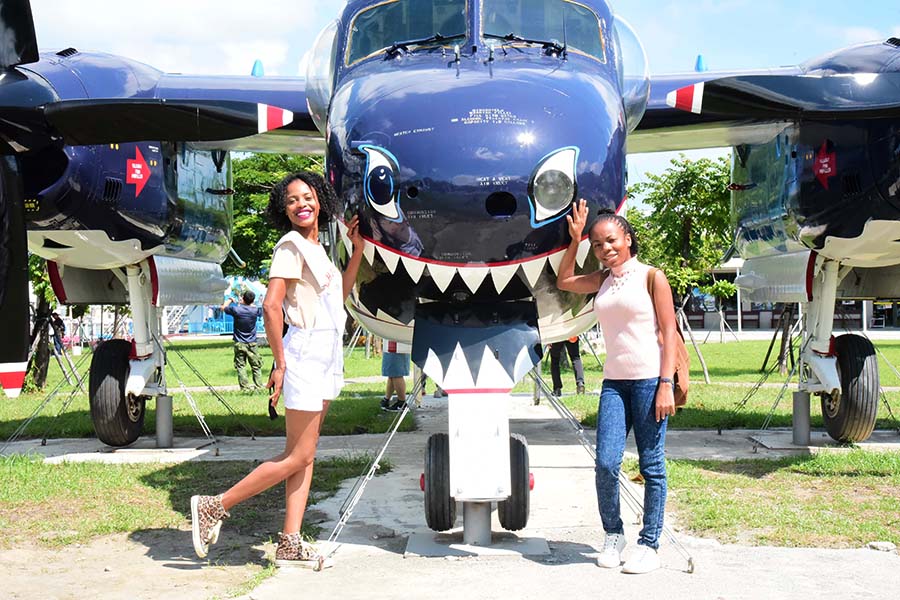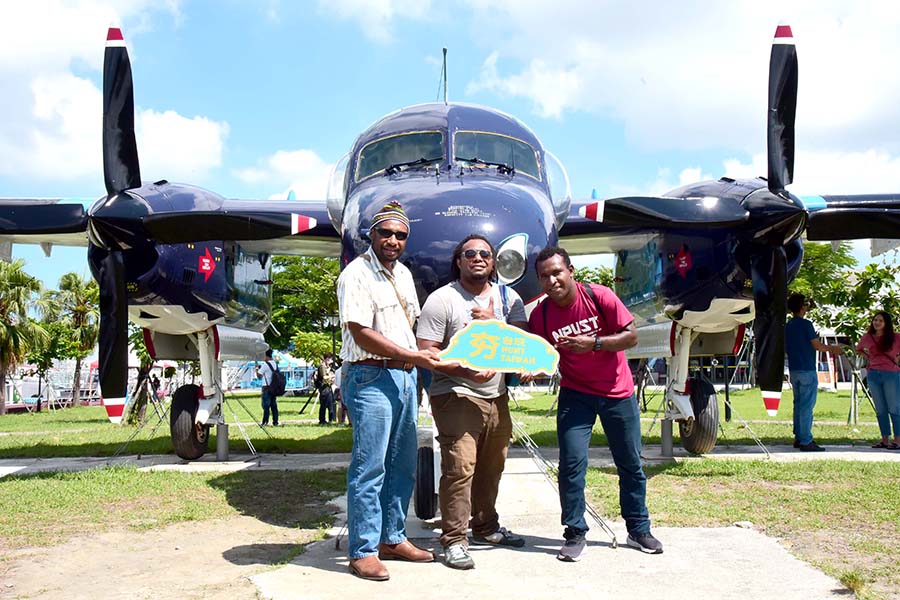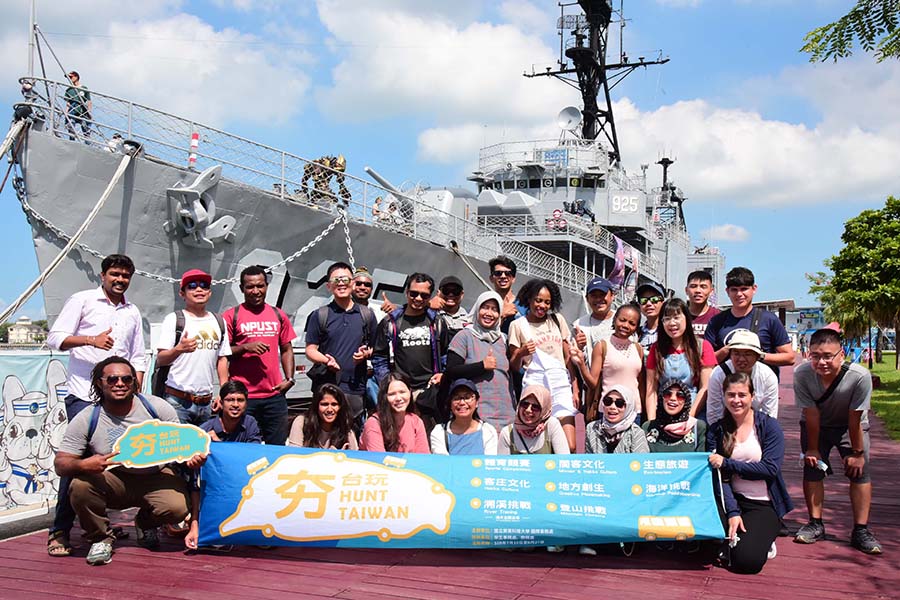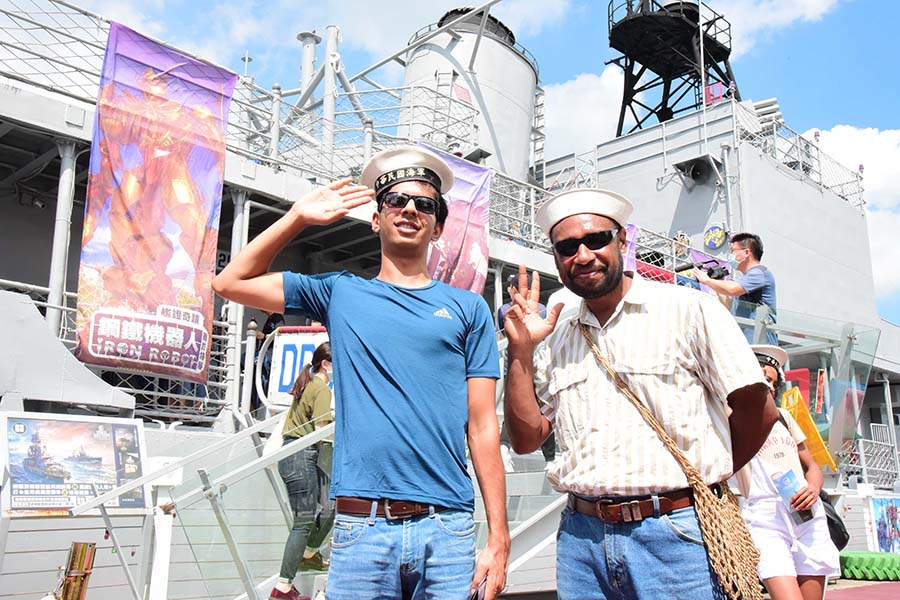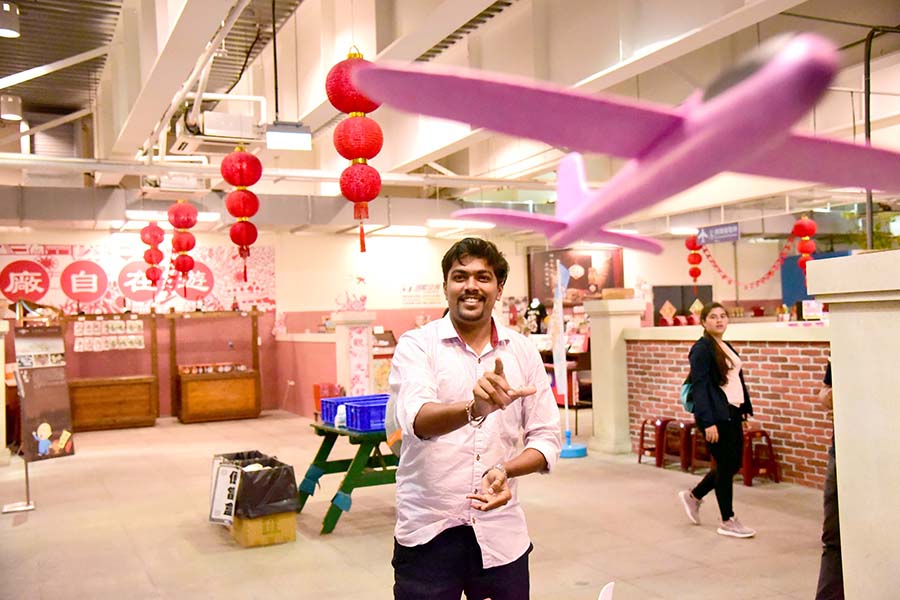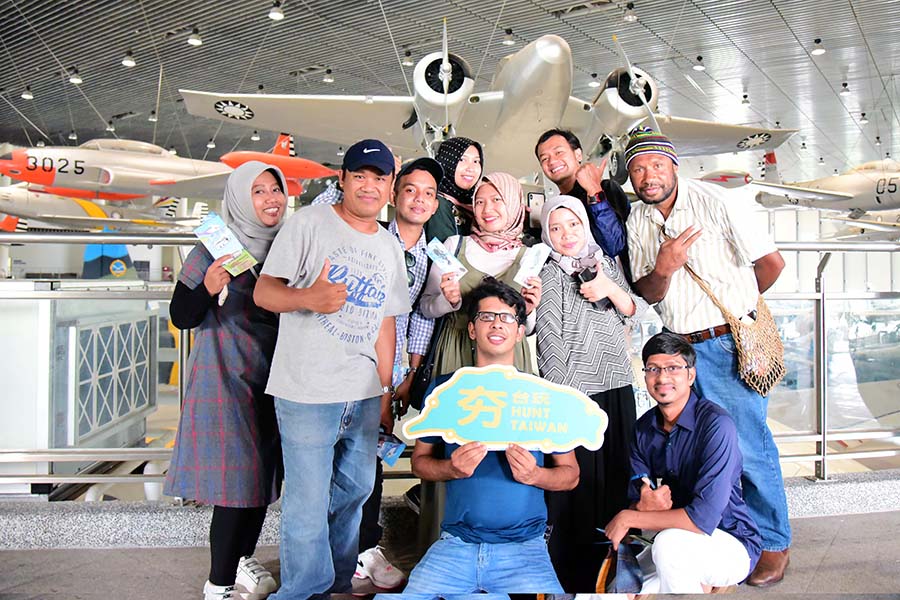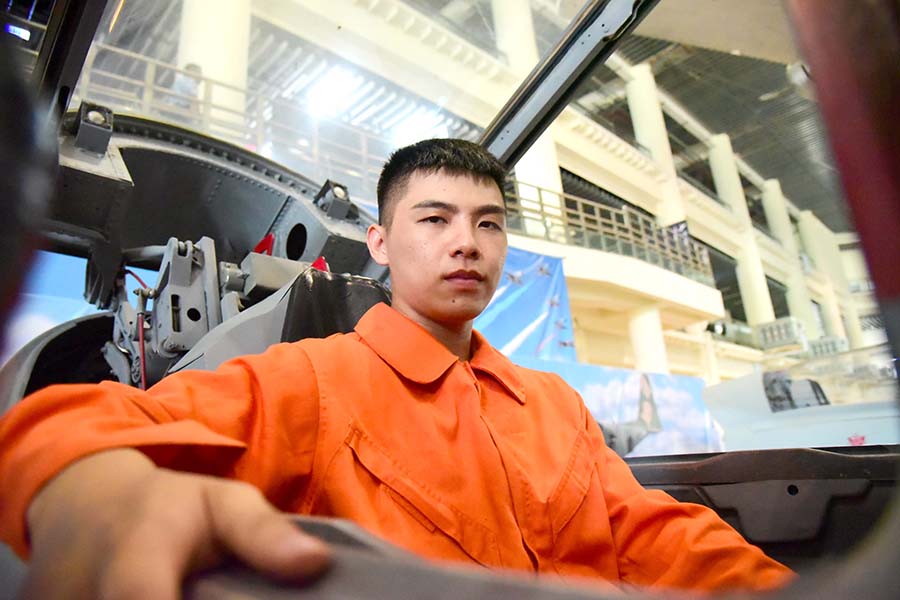For part six of the Hunt Taiwan series, 36 of NPUST’s international students went together to witness some of the magnificent equipment that was used to defend the freedom of the Republic in generations past. Embarking for the day, the course was set first for Tainan where the students from Malaysia, Thailand, Vietnam, Indonesia, Solomon Islands, Malawi, Palau, and Mongolia got an inside-look at one of Taiwan’s retired navy destroyers.
Beginning its career in 1945 as part of the US naval fleet, in 1978 the Deyang Destroyer was transferred to the Taiwan Navy, where its marine defense duties continued until 2005. At that time, the 60-year-old vessel underwent renovations, and in 2011 it was recommissioned as the first and only warship museum in Taiwan. Onboard the ship, the guide shared fascinating details with the attentive students as they toured the helm, checked out the missile racks, examined the artillery systems, and inspected the landing pad. Several students from Vietnam and Indian who were familiar with military affairs posed many insightful questions for the guide as they made the rounds. The sensation of being inside the warship inspired the imagination of the students, who couldn’t take enough pictures as they made their way through the ship.
When the navy tour was complete, the students headed south to the Kaohsiung Aviation Education Exhibition Hall to observe the more than 40 military aircraft on display within.
Boasting a collection of Chinese, American, and Soviet aircraft, the exhibition hall is the only suspended-aircraft gallery in all of Asia. The selection includes everything from planes used by the Black Bat and Black Cat squadrons on reconnaissance missions during the civil war between the KMT and the Communists, to the Zhongmei class Air Force One, which carried four heads of state throughout its career— each of the planes playing a role in protecting Taiwan and defending the freedom of the Republic. Departing from the aviation exhibition, the students returned to campus with a new experience to share. Coming in contact with those impressive machines that were built to protect people from the hostile forces – from the sea to the skies – was like glimpsing into a time gone by or hearing an old song that had nearly being forgotten.

